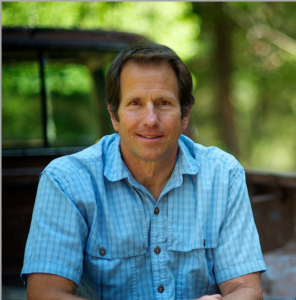Building endurance isn’t a lofty goal – it’s a skill. It requires specificity, practice, and patience just as any other physical pursuit. Today we break down the specifics of what it take to build endurance.

In a previous podcast episode, we explored the mental and physical aspects of long runs. In this episode, we dive deeper into the process that your body goes through to build that endurance.
Most importantly, we highlight what you can control through practice and what is left up to your genetic makeup. Either way, you’ll know what steps you can take to make improvements in your own running.
Our guest today is an expert in endurance sports including everything from alpine skiing to mountain running. He has worked with Killian Jornet, arguably one of the best ultra endurance athletes on the planet, and numerous top cross country skiers in the US.
Scott Johnston is the author of Training for the Uphill Athlete and Training for the New Alpinism. Both books are manuals for athletes and coaches, filled with resources and tools to elevate endurance training.
Scott Johnston Shares the Principles Behind Endurance
Scott Johnston is himself a lifelong endurance athlete, having performed at high levels in swimming, skiing, and climbing. As a coach, he has practiced and refined an approach to training athletes that emphasizes the skills that can be practiced and acknowledges the genetic determinants of certain abilities.
He can be found on Uphill Athlete and the Uphill Athlete Podcast, where additional resources and tips are shared.
In this episode, Scott explains the tripod of endurance, which are the foundational principles for going long in any sport. The first and most important piece is speed at anaerobic (lactic) threshold – this is how fast someone can go for a sustained amount of time.
Scott highlights that aerobic fitness is the part that we can control and that this, in fact, is the measure that separates us from the fastest marathoners on the planet. They are actually running within their aerobic threshold, just as you and I. Take a listen:
The second element determining endurance is an athlete’s economy at that sustained speed. A more economical runner requires less energy to be propelled at a given speed, meaning they can go longer.
The third, least correlated aspect to endurance, is VO2 Max. This is the amount of oxygen that an athlete can take in and utilize for performance. Contrary to the hype, VO2 Max is not a direct indicator of someone’s endurance, nor is it feasible to continuously increase for any given individual.
How to Improve Endurance
Listen to the entire episode to better understand these three principles and what you can do to improve your own training, including:
- Running with perfect form, as David Rudisha does
- Collecting feedback by video, mirror, or other method to assess your running
- Including strides in workouts
- Strength training for endurance
Check out the full episode below.
Subscribe to the podcast in Apple Podcasts, Spotify, Stitcher, iHeartRadio, or Google Play.
Links & Resources from the Show:
- Follow Scott with Uphill Athlete on Instagram
- SR coaching programs and training plans
Thank you Precision Hydration!
Thank you to our newest sponsor, Precision Hydration. If you’ve ever struggled with hydration or electrolyte issues, use code STRENGTH15 to get 15% off your first order. They offer tablets, packets, and other essentials to help you train in any environment.
Precision Hydration knows that there isn’t a one-size-fits all approach to hydration, which is why I love that they help athletes refine their hydration strategy for whatever event they’re training for. If you can’t get a custom sweat test done, they have a free online test that will give you your own personalized hydration strategy.
It’s heating up where I am and I’m ending my runs a lot sweatier than I was just a month ago. I know I’ll be paying a lot more attention to my hydration and electrolyte needs. This is especially important with longer runs in the mountains here at altitude.
You can learn much more about hydration in my conversation with the founder of Precision Hydration, Andy Blow.
Check out Precision Hydration and get 15% off your first order of electrolytes that match how you sweat by using the code “STRENGTH15”.